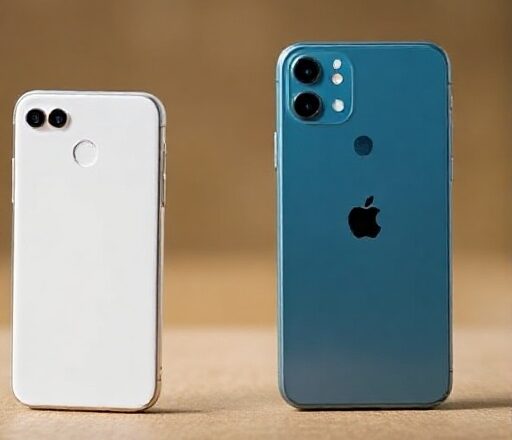Introduction
Every year, the smartphone industry converges around two major product launches: Apple’s new iPhone and Google’s Pixel. These events are more than just hardware releases — they’re statements about the future of technology.
In 2025, the rivalry has reached new heights with the Google Pixel 9 and Apple iPhone 16. Both devices push boundaries in design, performance, and AI integration. Apple continues to refine its premium ecosystem-first approach, while Google doubles down on AI-driven innovation and affordability.
This review offers a comprehensive breakdown of both flagships, helping you decide which one deserves your pocket and your wallet in 2025.
1. Design & Build Quality
The first impression of a smartphone is always about its design language, and in 2025, both Apple and Google have taken different approaches to what “premium” should look like.
Google Pixel 9
-
Features a matte-finish aluminum frame with subtly curved edges, offering excellent grip.
-
Available in bold, vibrant colors like Obsidian Black, Sky Blue, and Sunset Coral — appealing to younger, design-conscious buyers.
-
Slimmer bezels create a nearly all-screen front.
-
Weight is slightly lighter than its predecessor, making it comfortable for long use.
iPhone 16
-
Apple introduces a titanium frame across all models, not just the Pro lineup.
-
New pastel-inspired finishes (Lavender, Sky, and Sandstone) reflect Apple’s softer design direction.
-
The Dynamic Island is smaller and less obtrusive, blending better into the UI.
-
Feels slightly heavier but also more robust.
Verdict: Pixel 9 is more playful and colorful, while iPhone 16 feels ultra-premium and timeless.
2. Displays
Both devices have pushed screen technology forward, but their philosophies diverge.
Pixel 9
-
6.7-inch LTPO AMOLED panel.
-
Adaptive 144Hz refresh rate (a first for Pixel devices).
-
AI-driven Brightness Optimizer adjusts screen levels based on app usage and lighting.
-
Peak brightness: 2,600 nits for outdoor readability.
iPhone 16
-
6.5-inch Super Retina XDR OLED.
-
120Hz ProMotion with dynamic refresh adjustment.
-
Factory color calibration makes it a top choice for photographers and video editors.
-
Peak brightness: 2,400 nits with unmatched HDR rendering.
Verdict: Pixel wins on refresh rate and smoothness, iPhone wins on accuracy and content creation.
3. Performance & Processors
This year’s processors mark significant shifts in how power is delivered.
Pixel 9
-
Runs on Google Tensor G4, fabricated on a 3nm process.
-
Prioritizes AI workloads such as real-time translation, image processing, and predictive personalization.
-
Less powerful in raw benchmarks than Apple, but excels in real-world usage where AI is constantly at play.
iPhone 16
-
Powered by the A19 Bionic, the first mass-market 2nm chip.
-
Offers industry-leading single-core and multi-core performance.
-
GPU optimized for Apple Arcade and pro-grade apps like Final Cut and Logic.
Verdict: iPhone 16 leads in raw performance, Pixel 9 in AI optimization.
4. AI-First Features
The biggest differentiator in 2025 is AI integration, and both devices lean heavily into it.
Pixel 9 AI Features
-
Photo Unblur 2.0: Fixes even older, blurry photos with near-magic precision.
-
Live Translate 3.0: Real-time translation across video calls, text messages, and voice.
-
Battery SmartSense: Predicts app usage and intelligently extends battery life.
-
AI-powered calling: Spam filters, real-time voice-to-text transcription, and Google Assistant scheduling.
iPhone 16 AI Features
-
Siri+: A generative AI assistant rivaling ChatGPT, deeply integrated across apps.
-
ProCamera Smart Modes: AI automatically adjusts settings for portraits, sports, or night shots.
-
Focus Assist: An AI-driven productivity system that schedules tasks and silences notifications.
-
Health AI: Integrates with Apple Watch to predict potential health issues using biometric data.
Verdict: Pixel leads in practical AI tools, iPhone shines in seamless AI + ecosystem integration.
5. Cameras
Cameras remain a critical battleground.
Pixel 9 Camera System
-
200MP main sensor with AI-based image fusion.
-
48MP ultra-wide lens optimized for astrophotography.
-
50MP telephoto with 10x optical zoom.
-
Google’s AI editing tools like Magic Eraser Pro and Cinematic Mode 2.0 make post-processing effortless.
iPhone 16 Camera System
-
48MP triple-lens setup, improved with Lidar 2.0 for faster depth mapping.
-
Superior video capture: 8K ProRes and Dolby Vision HDR.
-
AI-driven skin tone correction ensures better human photography.
-
Action Mode 2.0 offers gimbal-level stabilization.
Verdict: Pixel 9 is the choice for photography enthusiasts; iPhone 16 remains king for videographers and creators.
6. Battery & Charging
Pixel 9
-
5,200mAh battery.
-
65W fast wired charging and 35W wireless charging.
-
AI learns charging habits to reduce long-term battery wear.
iPhone 16
-
4,800mAh battery.
-
45W wired and 25W MagSafe charging.
-
Apple’s legendary power efficiency ensures all-day use despite smaller capacity.
Verdict: Pixel offers bigger battery and faster charging; iPhone stays ahead in long-term efficiency.
7. Ecosystem & Software
Pixel 9
-
Ships with Android 15, tightly integrated with Google Workspace and Gemini AI.
-
Offers 7 years of guaranteed updates.
-
More customization, open ecosystem, and compatibility with third-party hardware.
iPhone 16
-
Runs iOS 19, the most polished mobile OS.
-
Seamless ecosystem: Mac, iPad, Apple Watch, AirPods all integrate perfectly.
-
Exclusive apps and services (iMessage+, FaceTime AI, Apple Arcade).
Verdict: Pixel for flexibility and Google AI, iPhone for unmatched ecosystem harmony.
8. Pricing & Availability
-
Pixel 9: Starts at $999, with aggressive trade-in offers and free Google One AI subscription.
-
iPhone 16: Starts at $1,199, premium pricing with fewer discounts.
Final Verdict
In 2025, both smartphones are excellent, but they appeal to different types of users:
-
Google Pixel 9: For those who want cutting-edge AI, great cameras, fast charging, and affordability.
-
iPhone 16: For users invested in Apple’s ecosystem, videographers, and those who demand unmatched performance.
Ultimately, your choice depends on whether you prioritize ecosystem polish (Apple) or AI innovation (Google).
